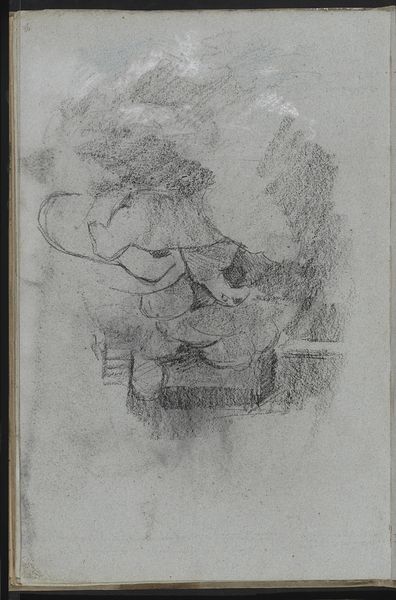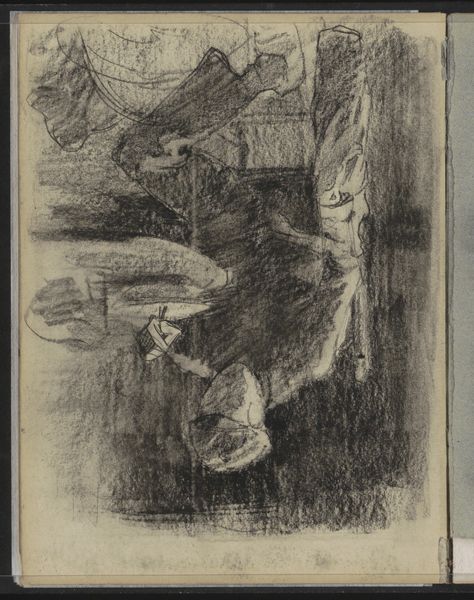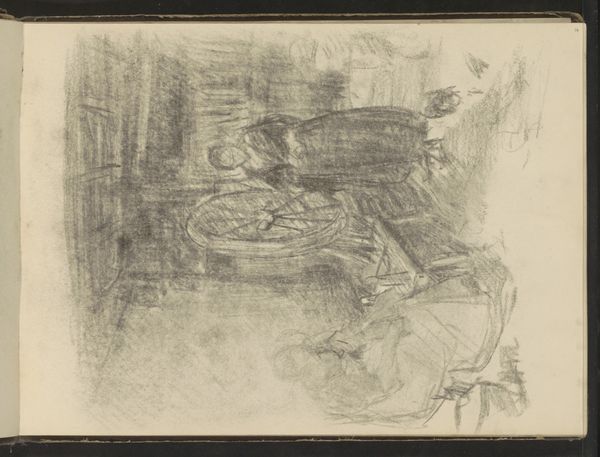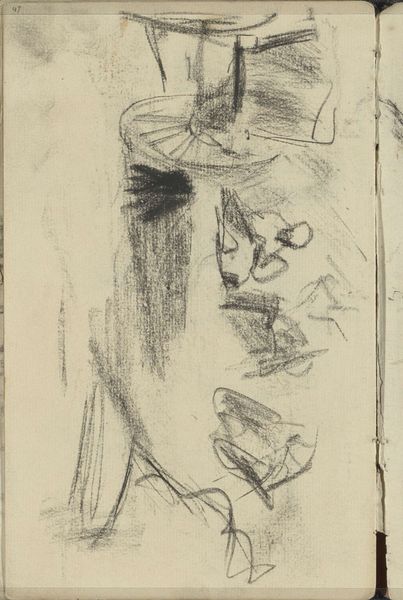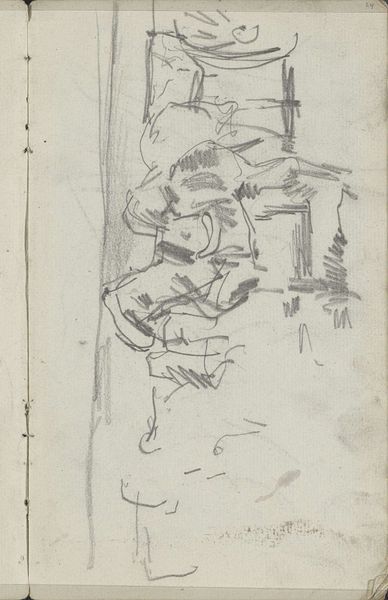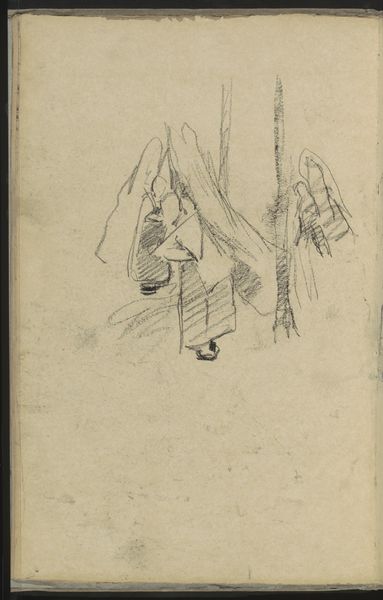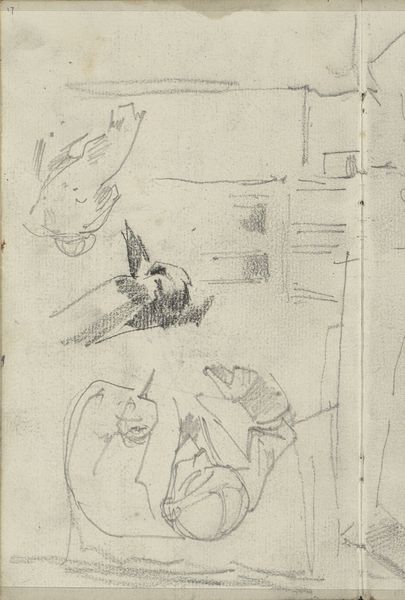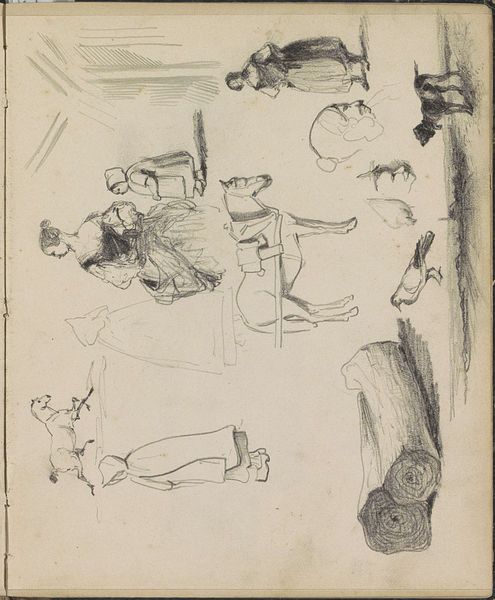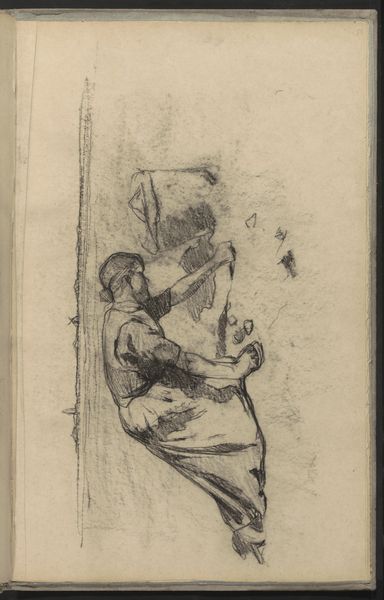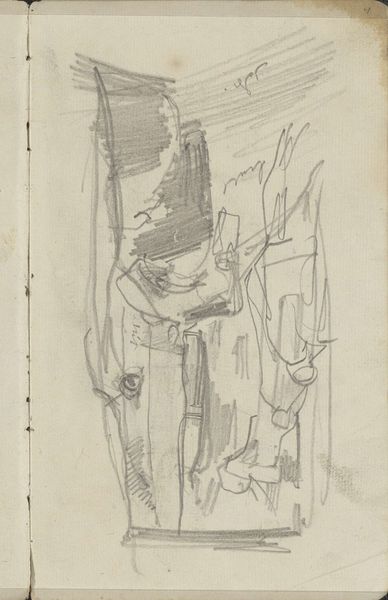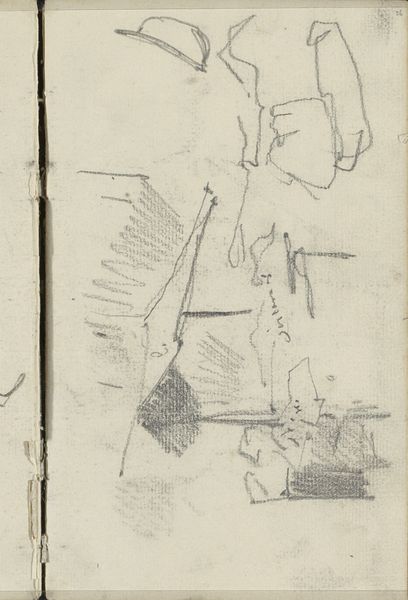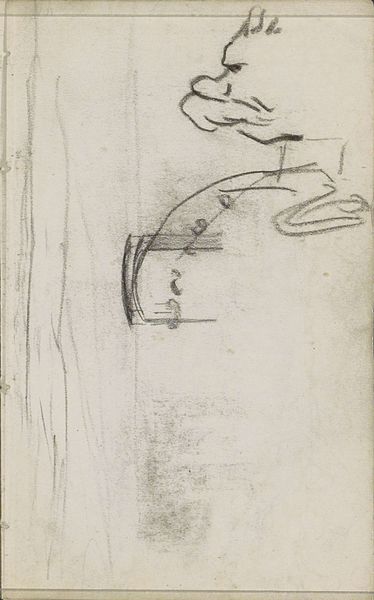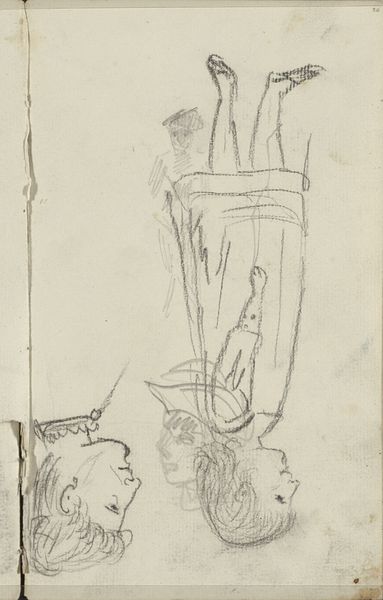
drawing, paper, pencil
#
drawing
#
amateur sketch
#
toned paper
#
light pencil work
#
impressionism
#
pen sketch
#
pencil sketch
#
landscape
#
paper
#
personal sketchbook
#
ink drawing experimentation
#
pen-ink sketch
#
pencil
#
sketchbook drawing
#
sketchbook art
Copyright: Rijks Museum: Open Domain
Curator: This drawing, held here at the Rijksmuseum, is entitled "Schapenkoppen en een interieur van een schaapskooi," translating to "Sheep's Heads and an Interior of a Sheepfold," made by Willem Witsen around 1884 to 1887. Editor: Immediately, there’s a fascinating discordance in the light pencil work; it's so immediate, yet the heavy blacks feel like encroaching shadows. What strikes me most is how Witsen directs our gaze—or perhaps it’s a purposeful lack of direction? Curator: Witsen was a key figure within the Amsterdam Impressionism movement. This piece provides insight into his artistic exploration during that period, when there was increasing attention towards portraying everyday rural life and the working class in art. Editor: Looking at the composition, the sheep's heads float rather unanchored, while the solid structure, almost like an entry to another world, offers some stability but overall the perspective is warped and dreamlike, as if capturing the interior mental space through formal means, using tonal contrast and sketching to give it this unique aesthetic experience. Curator: It’s also revealing that Witsen focuses on a humble subject like sheep heads. In Dutch 17th-century painting, animal depictions often conveyed symbolic meanings linked to wealth or religious narratives. However, during Witsen’s time, these shifted to studies reflecting contemporary realism. This embodies a movement to bring fine art out of idealized forms toward modern landscapes. Editor: What does Witsen’s choice say though about these sketch compositions and amateur sketch style versus established academic techniques which focused primarily on detail, perfect shading? Does the incompleteness lend an intimacy? Does he aim to record them like one would photograph animals for scientific classification. Curator: I agree. Consider that he would have sketched similar drawings on paper for personal and quick documentation, capturing these details in their immediacy while contrasting it with detailed depictions meant to preserve or evoke something significant relating towards those everyday existences and struggles. Editor: Ultimately it invites reflection on not only Witsen's exploration of form but also how such studies provided means towards capturing life's fleeting moments during shifts across social dynamics. Curator: An exercise into how something common transforms, even to us.
Comments
No comments
Be the first to comment and join the conversation on the ultimate creative platform.
